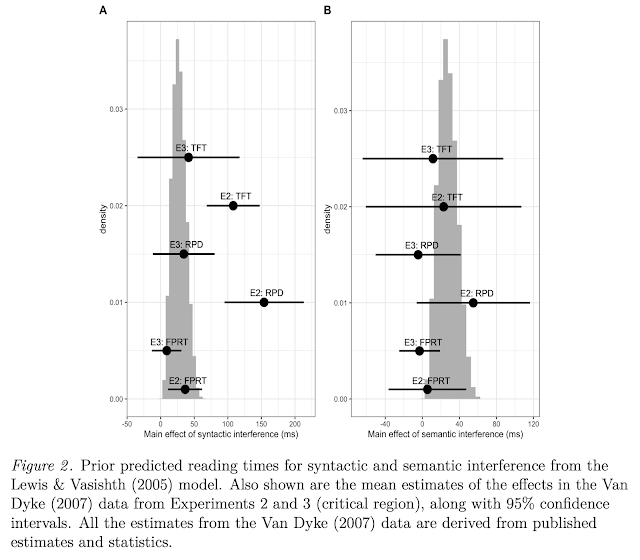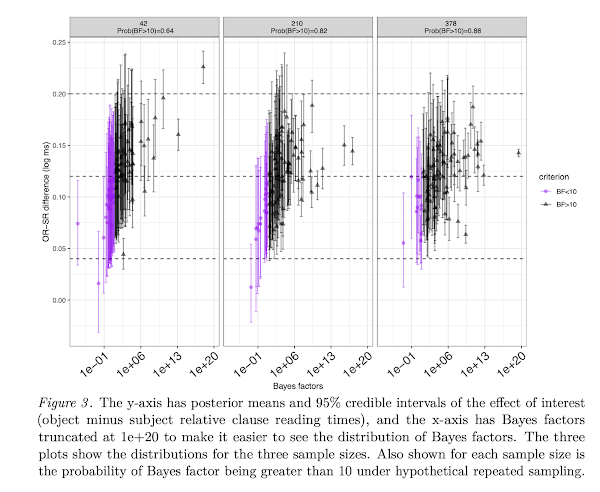My PhD student Paula Lissón has just submitted this important new paper for review to a journal. This paper is important for several reasons but the most important one is that it's the first to quantitatively compare two competing computational models of retrieval in German sentence processing using data from unimpaired controls and individuals with aphasia. The work is the culmination of four years of hard work involving collecting a relatively large data-set (this amazing feat was achieved by
Dorothea Pregla, and documented in a series of papers she has written, for example see
this one in Brain and Language), and then developing computational models in Stan to systematically evaluate competing theoretical claims. This line of work should raise the bar in psycholinguistics when it comes to testing predictions of different theories. It is pretty common in psycholinguistics to wildly wave one's hands and say things like "sentence processing in individuals with aphasia is just noisy", and be satisfied with that statement and then publish it as a big insight into sentence processing difficulty. An important achievement of Paula's work, which builds on
Bruno Nicenboim's research
on Bayesian cognitive modeling, is to demonstrate how to nail down the claim and how to test it quantitatively. It seems kind of obvious that one should do that, but surprisingly, this kind of quantitative evaluation of models is still relatively rare in the field.
Title: Similarity-based interference in sentence comprehension in aphasia: A computational evaluation of two models of cue-based retrieval.
Abstract: Sentence comprehension requires the listener to link incoming words with short-term memory representations in order to build linguistic dependencies. The cue-based retrieval theory of sentence processing predicts that the retrieval of these memory representations is affected by similarity-based interference. We present the first large-scale computational evaluation of interference effects in two models of sentence processing – the activation-based model, and a modification of the direct-access model – in individuals with aphasia (IWA) and control participants in German. The parameters of the models are linked to prominent theories of processing deficits in aphasia, and the models are tested against two linguistic constructions in German: Pronoun resolution and relative clauses. The data come from a visual-world eye-tracking experiment combined with a sentence-picture matching task. The results show that both control participants and IWA are susceptible to retrieval interference, and that a combination of theoretical explanations (intermittent deficiencies, slow syntax, and resource reduction) can explain IWA’s deficits in sentence processing. Model comparisons reveal that both models have a similar predictive performance in pronoun resolution, but the activation-based model outperforms the direct-access model in relative clauses.
Download:
here.
Paula also has another paper modeling English data from unimpaired controls and individuals in aphasia, in
Cognitive Science.






